Top Whitetail Deer Hunting Tips That Make a Successful Archery Season
Archery hunting for mature whitetail bucks is one of the most demanding challenges a hunter can have, especially in Manitoba. Success requires more than just patience—it takes strategic scouting, careful planning, and skillful execution. In this article, I’ll share key tips and strategies that helped me through my archery whitetail season a couple of years ago, which will hopefully help you increase your chances of harvesting a mature whitetail this season and into the future.
From scouting and trail camera setups to realistic shooting practice and stand placement, these are techniques that have worked for me over the years. While I’ve learned a lot through trial and error, my hope is that by sharing these experiences, they can help you in your own journey toward success in the field.
Setting The Stage For Deer Season
A few seasons ago, when I found out my archery elk draw was unsuccessful, my focus shifted quickly to nothing but whitetails. Long before putting boots on the ground, I set out a personal goal to harvest a mature buck with my bow. This was not necessarily even a goal, but more of a dream of mine for the last several years.
Since I have taken up archery hunting these elusive creatures, I have enjoyed some successes. However, in that same time I've had more than a few slices of humble pie in the whitetail woods. As a bow hunter, harvesting a mature whitetail is one of the most difficult accomplishments in this province. I knew it was going to take months of scouting and a meticulous set-up to offer even an opportunity to fulfill this dream. The following is a story of my successes and failures throughout my archery season. Mixed in are some key whitetail deer hunting tips that helped make that archery season the biggest one yet.
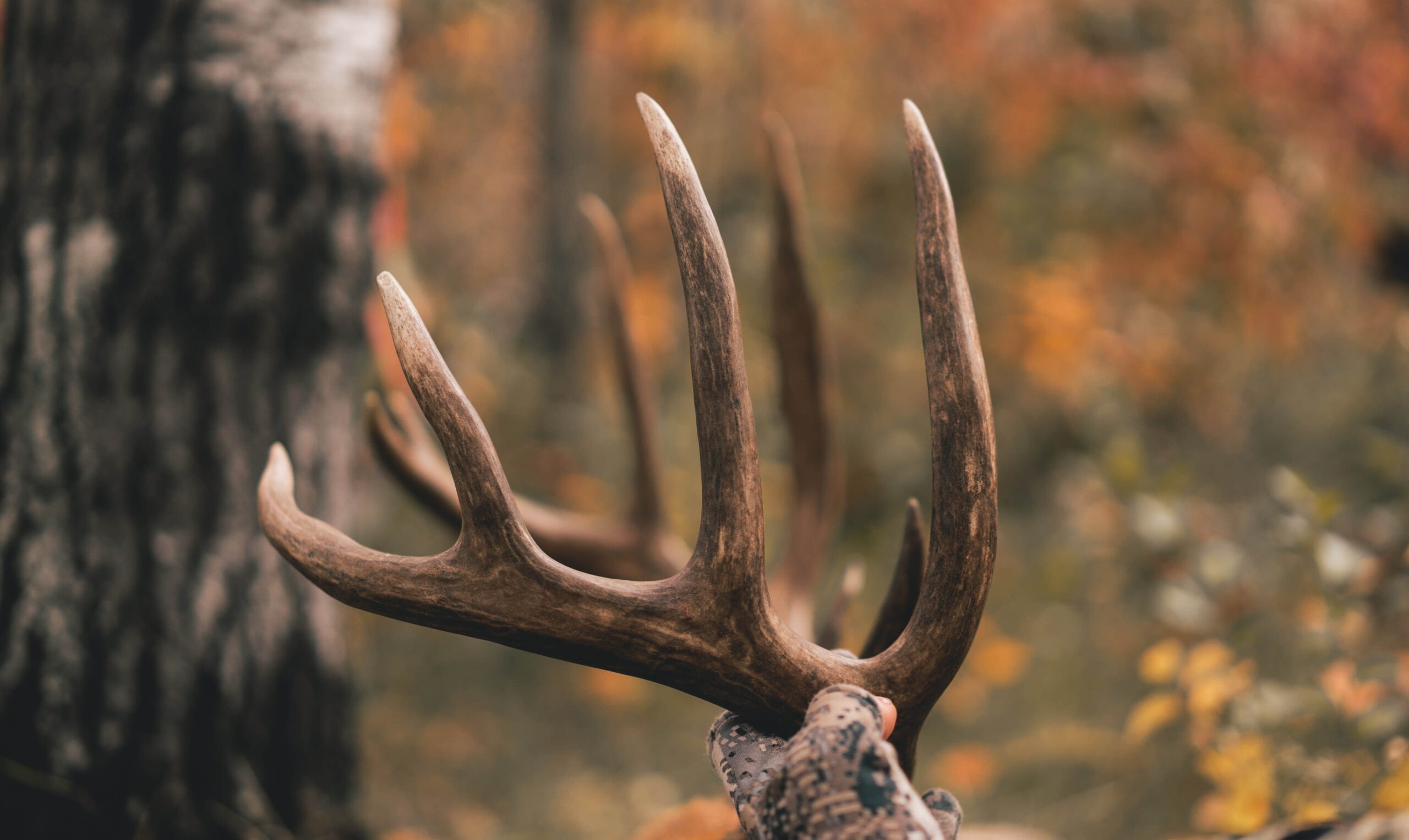
iHunter Scouting Segment - Modern Day Whitetail Deer Hunting Tips
Each summer, as the spring bear season comes to an end in June, I begin my two-pronged scouting approach for whitetails. This begins with setting up my trail cameras across a number of properties and parcels of crown land. Once my cameras are in position, I start traversing many miles of gravel roads each week with the spotting scope, looking for mature whitetails. All of this is made incredibly easy while using the iHunter App on my phone. This app allows for year-round e-scouting of my whitetail areas of interest.
Early Season Trail Camera Scouting
The locations in which I set my initial trail cameras of the season are often spots that have proven productive in the past. However, each year, I spend countless hours on my iHunter App on my phone and desktop, meticulously scouring satellite imagery in areas of interest. What I am always looking for are potential bedding areas and the travel corridors leading from them to a food or water source.

Once I’ve identified a few areas of interest, I’ll put some boots on the ground, with trail cams in one hand and the iHunter app on my phone in the other. I’ll then navigate through the seemingly impenetrable woods with the GPS and cacheable HD satellite imagery on the app. Having these features allows me to find the path of least resistance, travel with ease, and get into the key whitetail areas that would be near impossible to find without.
Finding a Whitetail Bedding Area
Once in a bedding area, I’ll keep a keen eye out for deer sign. Any sign you find is good and shows that at the very least, deer have used this area in the past. One of the things I will be on the lookout for is deer beds. I’ll often find beds on edges or points in between the lower-lying areas and the ridges. These beds will generally be situated so that when the deer are using them, they will be able to wind much of the surrounding area. Where I am at in the Interlake, there is very little topographical changes, so even the smallest drop-off from things like an oak ridge to a swamp draw is an area I would definitely focus on.
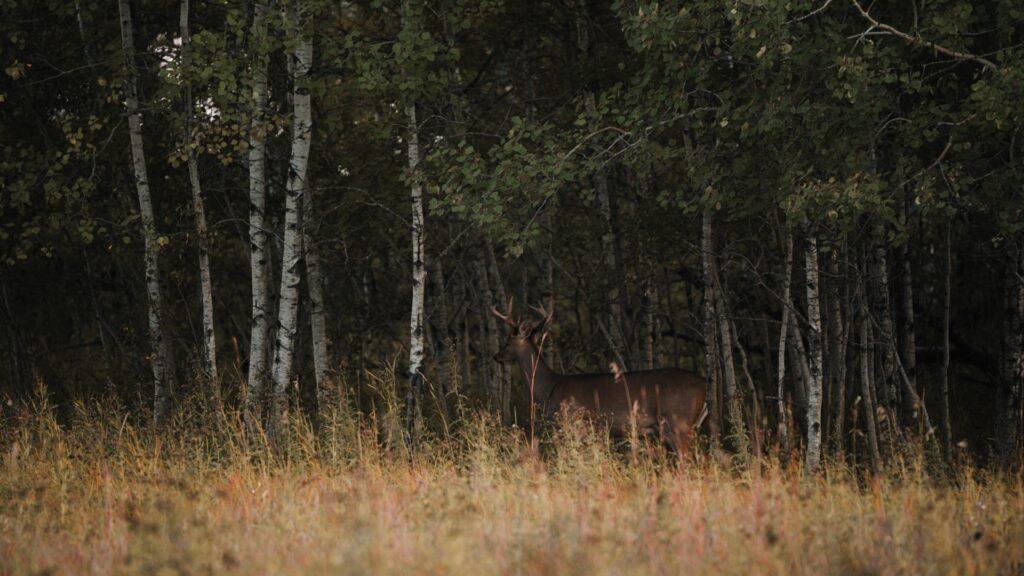
Finding Signs of the Whitetail Rut
While in these these spots I will also look for deer rubs and scrapes from past seasons. This teaches me that this area is also used during the time leading up to, and throughout the rut. I’ll also look for deer droppings and try to figure out how fresh they are, to help paint a picture of how recently deer have been in these spots.
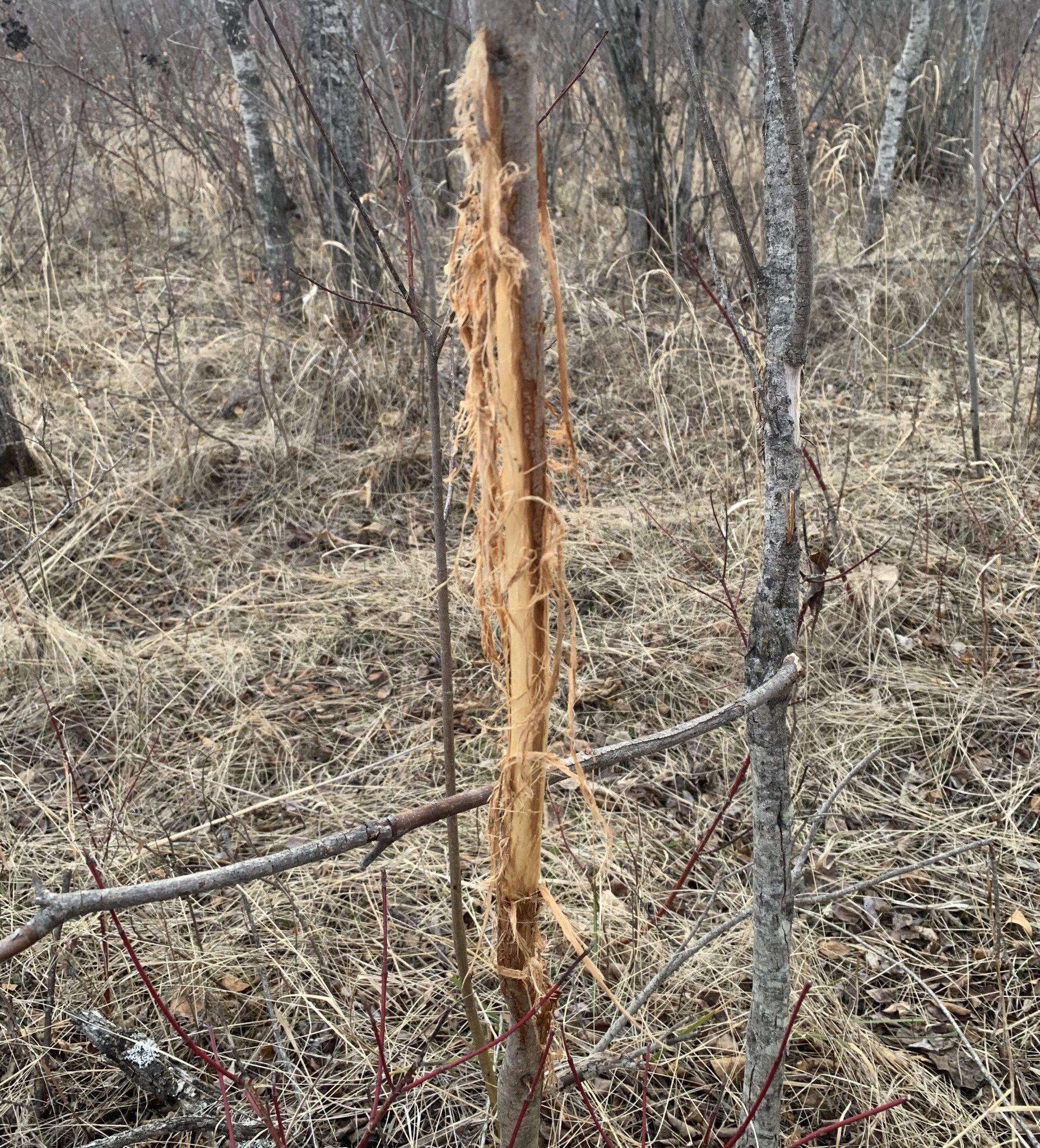
Finding and Mapping out Deer Trails
Once I discover that I am in a relatively high-traffic deer area. I will start to mentally and technically map out the networks of trails surrounding the sign. The iHunter app has a “track me” feature that is very useful here. This feature will leave a breadcrumb trail on your map from everywhere you walk. Having this on while travelling the deer trails doesn’t leave anything up for interpretation. All the trails are right there, perfectly mapped out on your phone. Studying these will often help clarify which trails are used most often. It gives you a great idea of their general direction of travel and where to begin setting up cameras.
Now that you have the best trails in these areas dialled in, it’s time to set the cameras up and let them do the work! For more information on early season trail cam tips, check out our Top 5 Trail Camera Tips for Manitoba Archery Whitetail blog.
Scouting for Whitetails with Optics
Once the cameras are up, I hit the road with my optics. Covering countless miles of gravel with the windows down, I methodically comb through every bush, swamp and agriculture field with the binos. I never know what I’m going to find while traversing the wild lands of the Interlake. All I know is that I’m looking for the next mature Manitoba whitetail, to take over my life for the coming months.
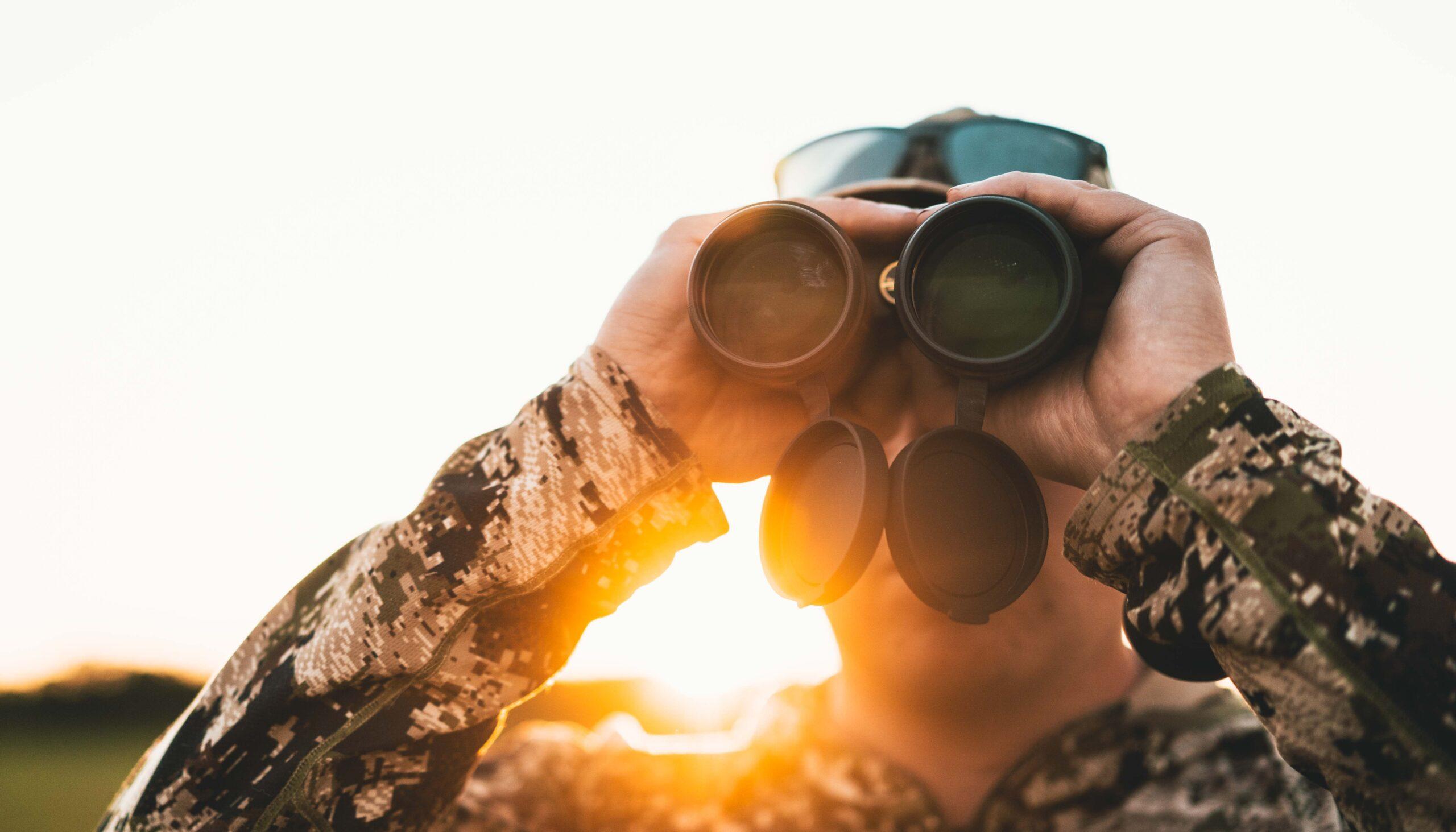
Three Pillars of Deer Hunting: Food, Water, Shelter.
When I’m hitting up the roads looking for animals, I’m certainly not going in blind. Again, I spend an exorbitant amount of time looking through every landscape feature in these areas on the iHunter satellite images. I’ll find areas of interest that have what I call the three pillars of deer hunting: food, water and shelter. When passing through these particular areas, I pick everything apart even more with my optics. I constantly keep note of the time the deer are in the field, what the weather is like when I see them, where they retreat to cover, the types of bucks I see, and how many does are around the area. Following along with these tips and keeping note of what is going on each night in those fields can put you a step ahead of those deer should you get permission on that property.
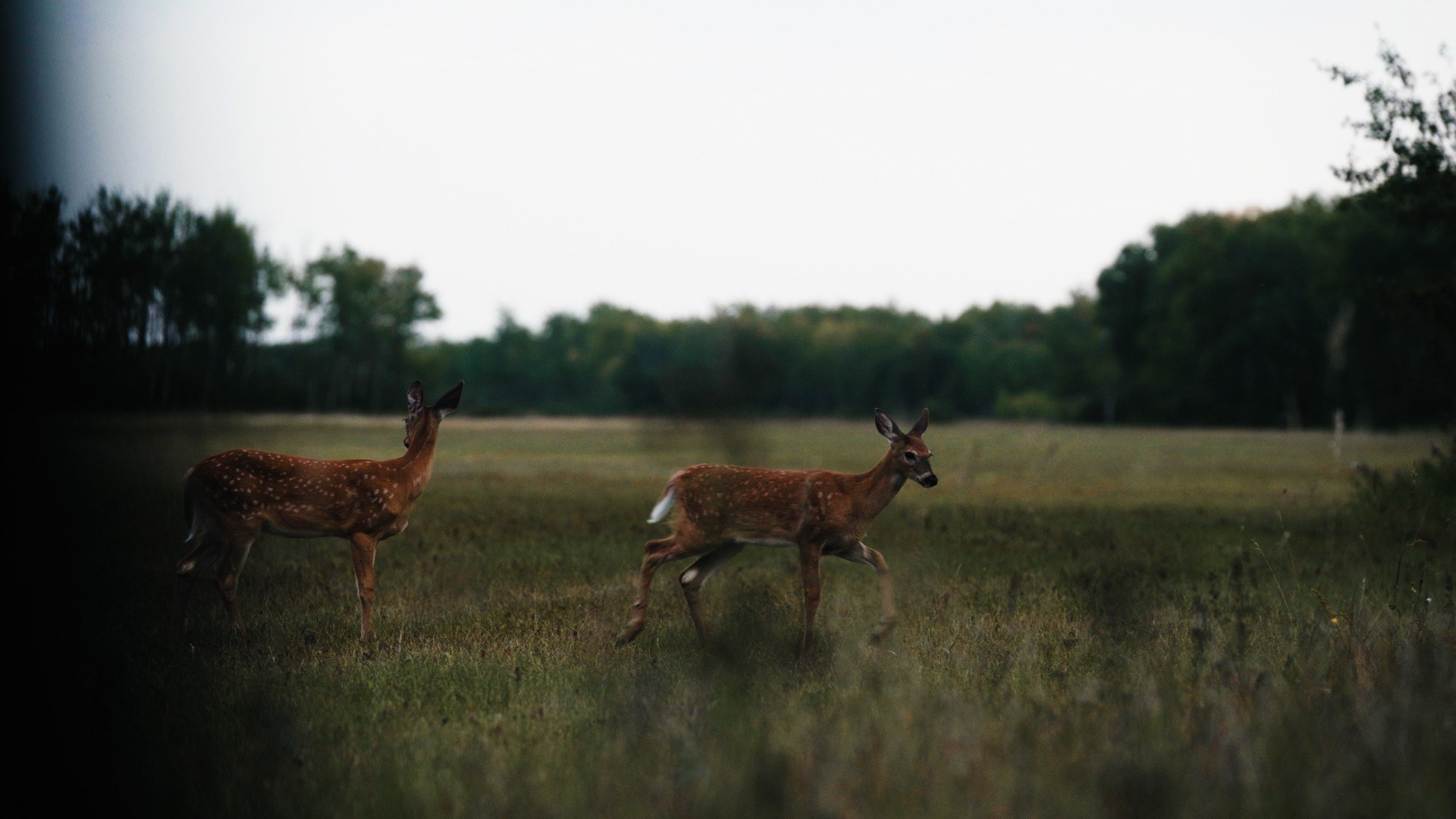
Finding Whitetail Permission
Once you have found a buck, the next step is finding the permission. This step can often be a difficult one, and its not uncommon to strike out. If you can’t quite nail down the permission, there is still other options. The first step, if you haven’t already, is get your hands on a land ownership map for that municipality. Find the property you found the deer on, and look around it for some public land options.
In many cases some of the biggest bedding bushes are found on public lands. Maybe you can’t hunt them in the field, but there is still a chance you can close the distance on them on their way to or from the food source. If not, it’s time to get back on the road and find yourself another one! The more time you spend on the road increases your odds of finding another mature buck exponentially.
Many Miles and Many Whitetails
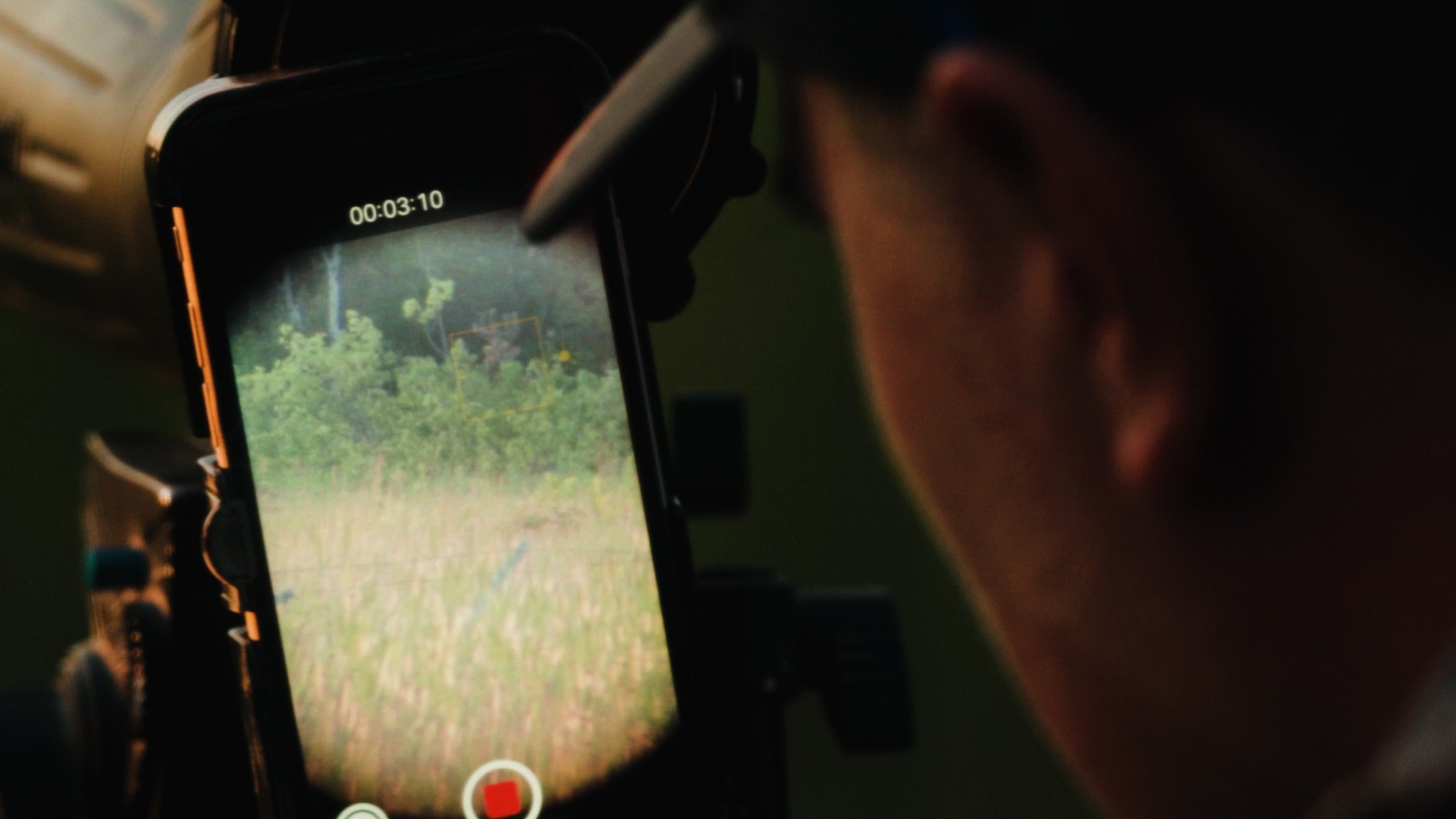
This year, I found more mature whitetails then I ever have in my life. Using the tips above allowed me to follow along closely with over a dozen good bucks throughout the summer months. As season approached, there was a handful of those that I knew nearly everything about. The days in August couldn’t go by fast enough leading into archery season opener.
Practice Makes Perfect: Pre-Season Shooting
Shooting my bow in the offseason is one of my biggest steps for getting prepared for the archery seasons. Months before archery season opens, I spend some time nearly every day shooting my bow. Archery hunting is a huge responsibility and each hunter should make every attempt to be as good of a shot as they can be, before ever entering the whitetail woods.
For me, archery practice is a lot more than just shooting from the same spot over and over. One thing I like to do is try to replicate real hunting situations while practicing. What that can entail is shooting from different positions. Whether that be sitting in a chair or on the ground, from an elevated position or even with some obstructions in the way. All of that will prepare you way more for an actual hunting situation, than standing in one place over and over.
Another tactic I use to make myself a better shooter, is practicing from long range. However, when I first pick up the bow to start my summer of practicing, I like to start by shooting shorter ranges. Doing this for the first handful of rounds of the year will help retrain your muscles and get you back in bow shooting shape.
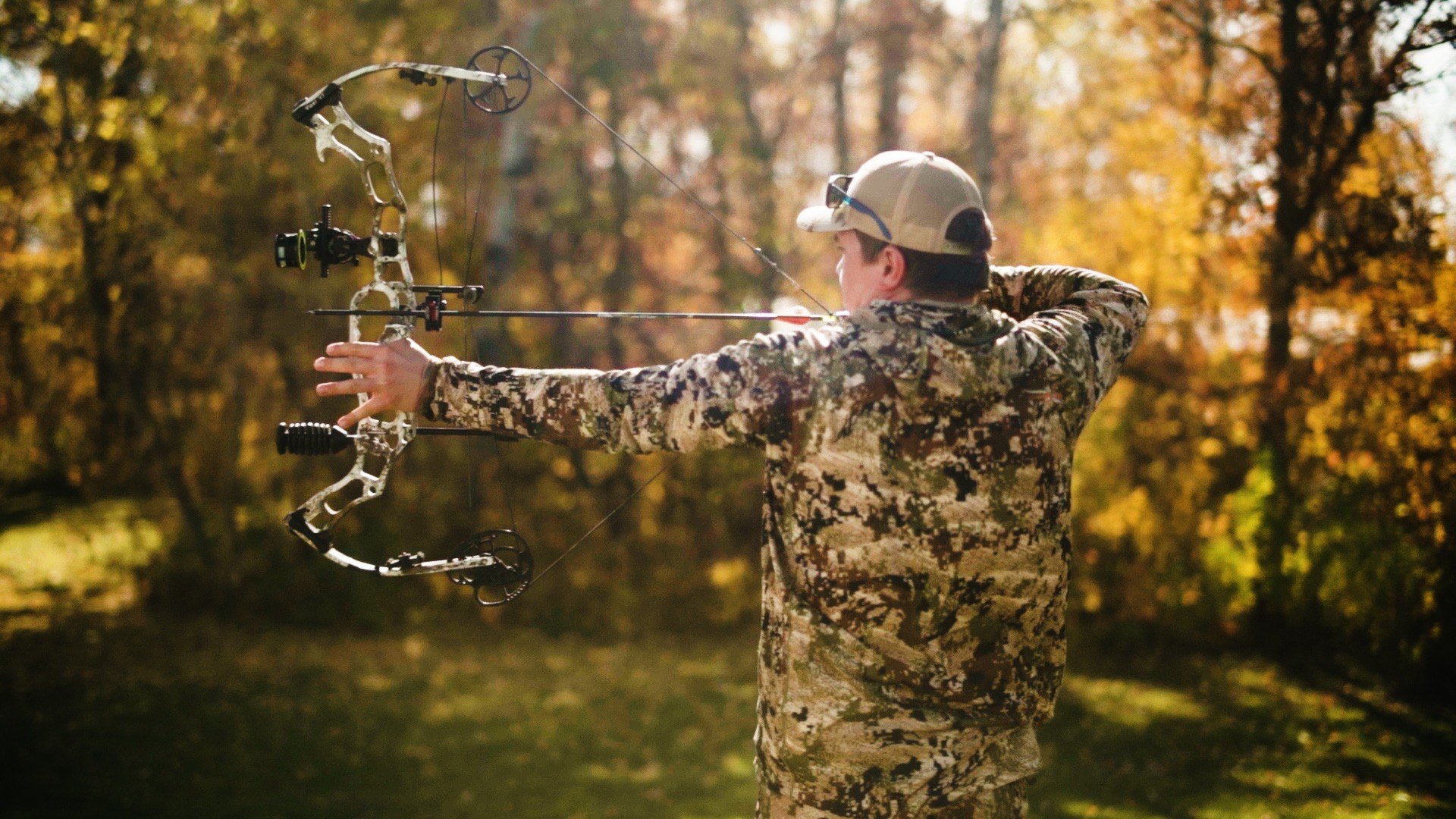
Long Range Practice Makes Short Range Perfection
Once you are ready for it, start stretching out your ranges. I like to work my way to 60 yards and sometimes beyond. Don’t be shocked if your first groups of arrows at the long ranges are far from good. Keep shooting at these ranges and you will notice them getting better. Becoming proficient from far will make your close ranges seem easy – Long range practice makes short range perfection.
Leading into season I needed a few tune ups on my bow. There is nobody I trust more working on my bow than the folks at Heights Outdoors. In no time everything on my bow was dialed in and ready for the whitetail woods. Anything hunting related that you could ever need leading into season, they have you covered.
Time to Set-up: Tree stands & Ground Blinds
As season quickly approached, it was time to narrow down my plans and set up my blinds and stands. After much deliberation I set my sights on two locations, a bean field and an alfalfa field. Both these locations revealed huge bachelor groups of bucks, each with multiple mature bucks within them.
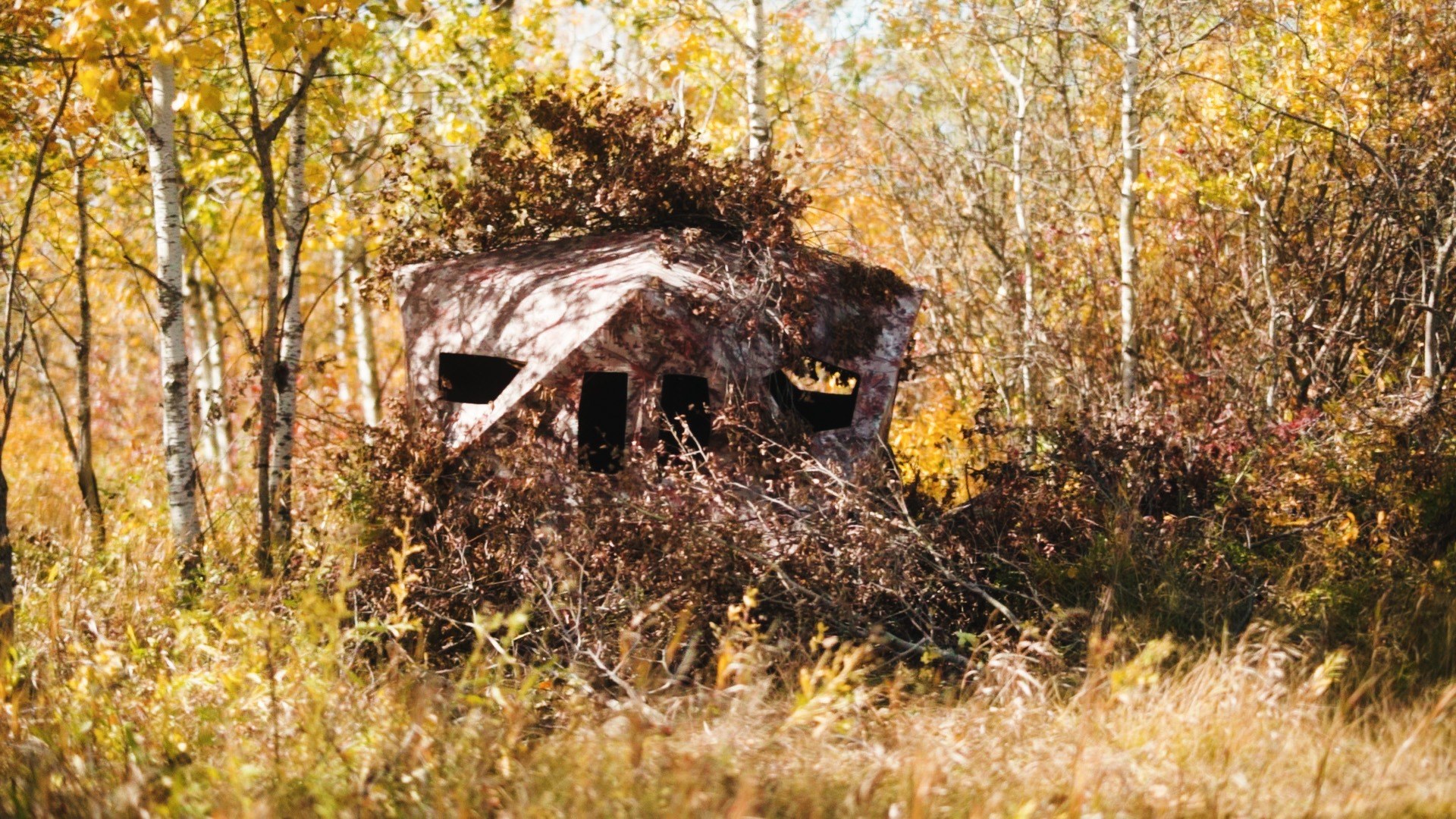
The Bean Field One-Two Punch
For the bean field, I set a ground blind and a tree stand. Both these sets were done with wind in mind. In Manitoba’s fall season, the prevailing wind is generally Northwest. Winds from other directions are not uncommon, however I like to place my main sets in a way that are favorable for the more common wind direction. The tree stand went up on the south bush line of the field. The ground blind went in a small bluff that created a pinch point on the field's east edge. The beauty of these sets is that the tree stand was perfect for the prevailing winds, and the ground blind was huntable for some of the less common wind directions. This one-two punch would allow me more opportunity to hunt these bucks regardless of the wind.
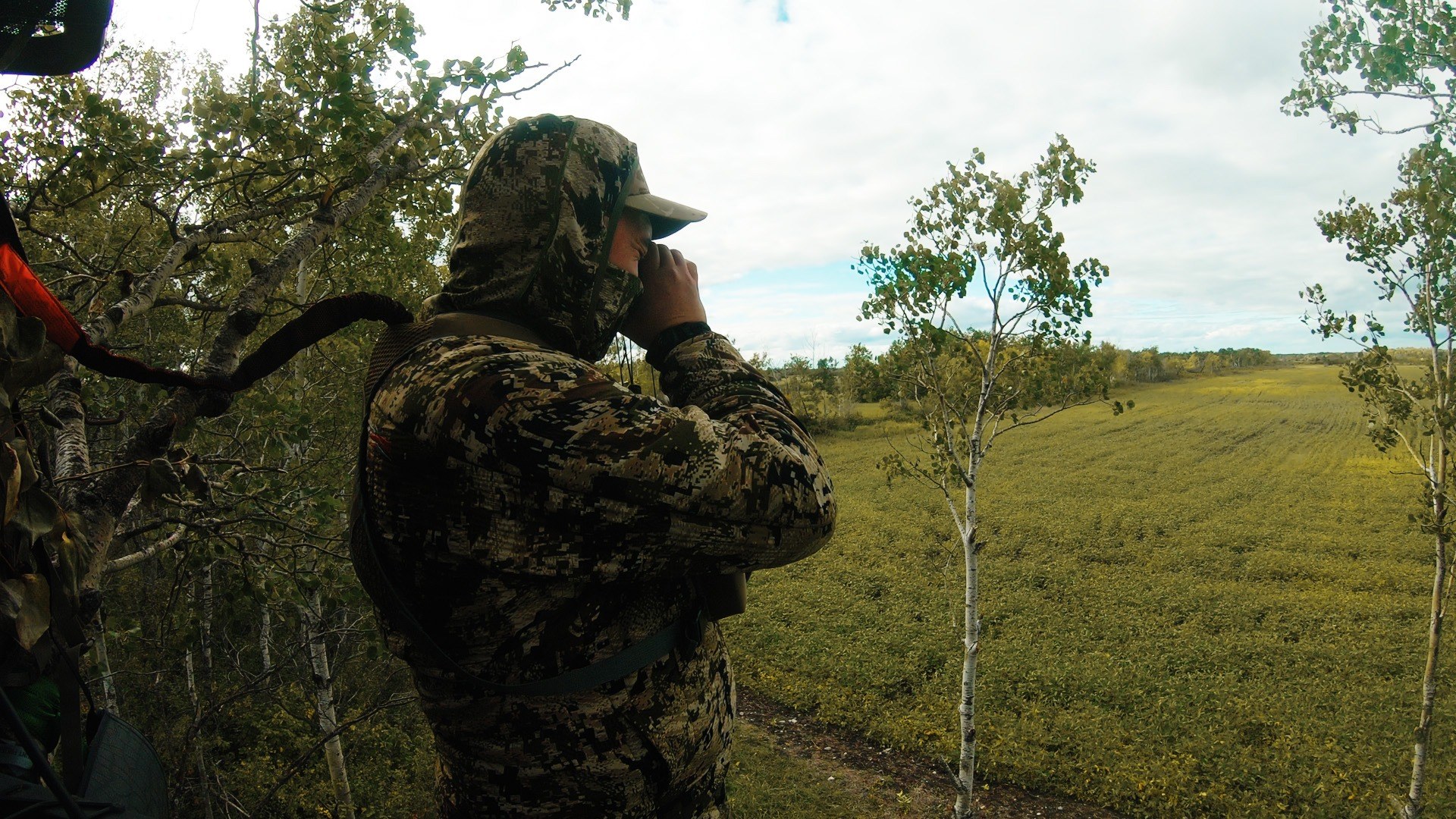
As the season neared, the once vibrant green soybean crop slowly faded to a brownish yellow. In just a week’s time, the field went from housing many great bucks throughout the last two hours of daylight to nearly nothing. The trail cameras revealed less and less of the target bucks and only in the middle of the night. After a brief time spent hunting it during the season, I decided it was time to head to plan B, the alfalfa field.
Whitetail Set-up on the Alfalfa Field
For the Alfalfa field, I had to go with a ground blind. Where I wanted to set up there was no trees big enough to allow for a tree stand set. This spot required a little more homework to figure out exactly what these deer were doing. In early June I noticed a few really nice velvet bucks in the area. As I spent more time throughout the summer scouting the property, I learned there was a number of different deer I would see consistently in a handful of areas. That’s when the homework really began.
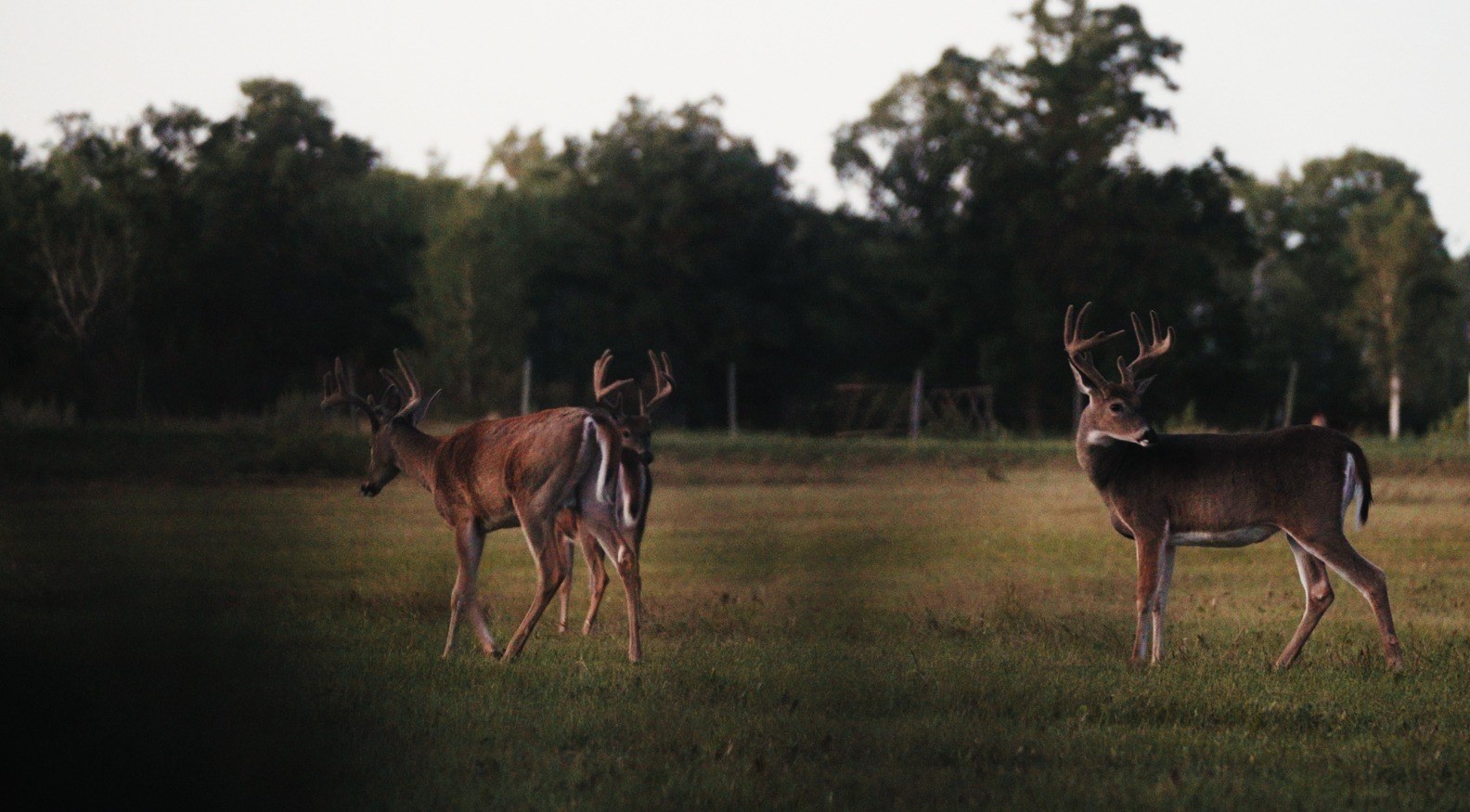
I wanted to learn exactly why these deer were so consistently in this area. Further investigation on iHunter’s satellite imagery revealed the full picture. Throughout the summer and into the fall, near drought-like conditions made the landscape particularity dry. Only a few hundred yards from this alfalfa field is an old dugout, still full of water. A closer inspection revealed an outrageous amount of deer tracks. Bingo! On the opposite side of the dugout is a big poplar and oak mixed bush, perfect for bedding. It all started to make sense. The three pillars of deer hunting all in one small area, it was perfect.
Homework Complete
We found an awesome location on the edge of the alfalfa, just inside the bush, to set the blind. Here, we found a perfect pinch point on their travel corridor. This lead them from their bedding area through the water hole then into the field. In this spot, the majority of wind directions would blow our sent in our favour and away from where I hoped the deer would travel from. Before even hunting out of this blind, I sat inside and picked out several landscape features throughout my shooting lanes and surrounding areas. I then grabbed my range finder and ranged each of these features. I did this so that when a deer enters my shooting lane, I will already have a good idea how far that deer is.
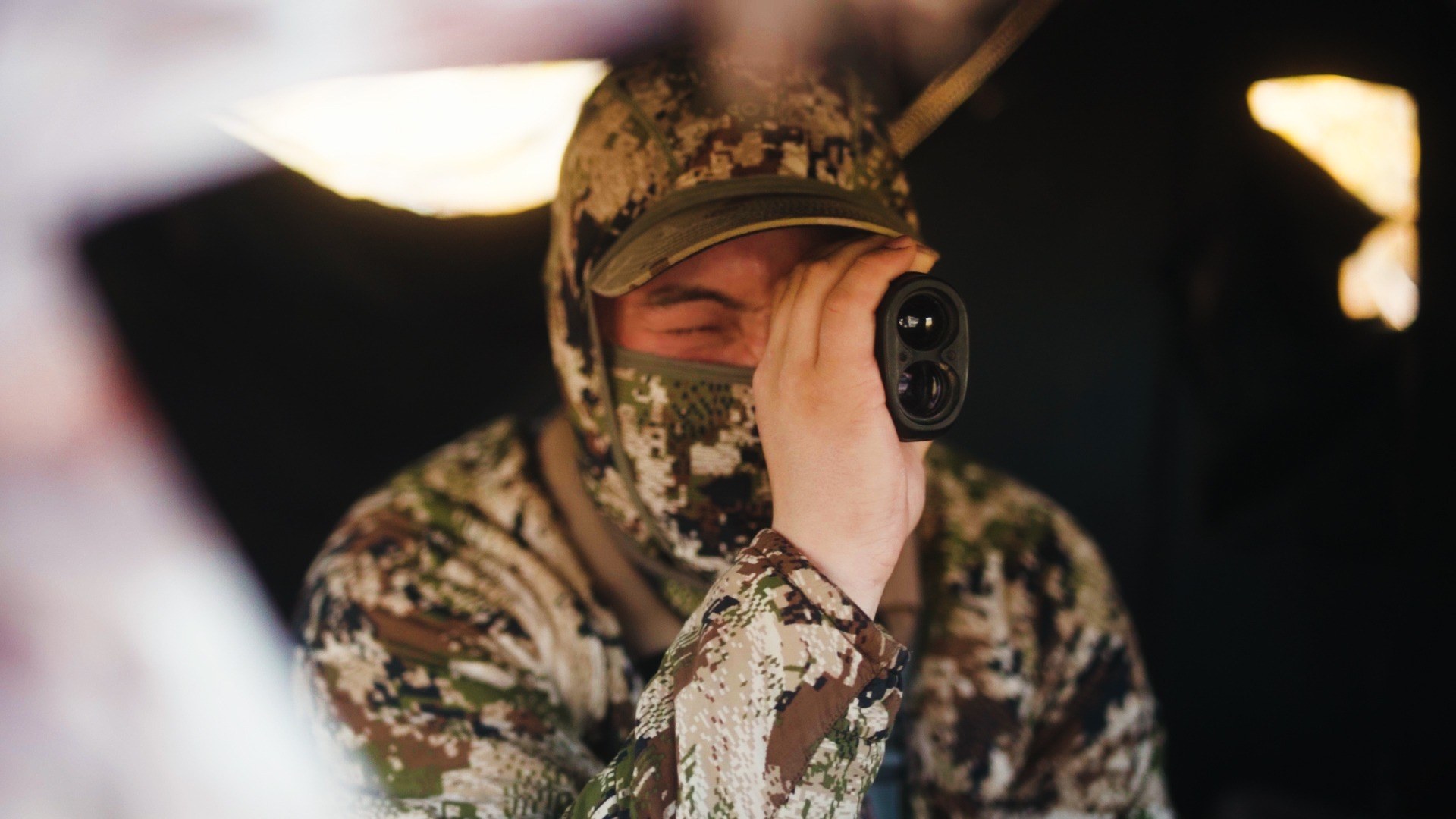
Taking Scent Control Seriously
Leading into this hunt, we knew that scent control was going to be absolutely crucial. With managing our wind already dealt with, we took it another step further to insure we remained undetected in the close-range combat. Before season we stocked up with bottles of scent-killing sprays and soaked our clothes in it each day. After the hunt our clothes went straight into a sealed bag to ensure no scent contamination. Another step we took was the use of an ozone generator. Prior to using it, I always thought of it as gimmicky. But after using it, I am a firm believer that it was a key component to the success of the hunt.
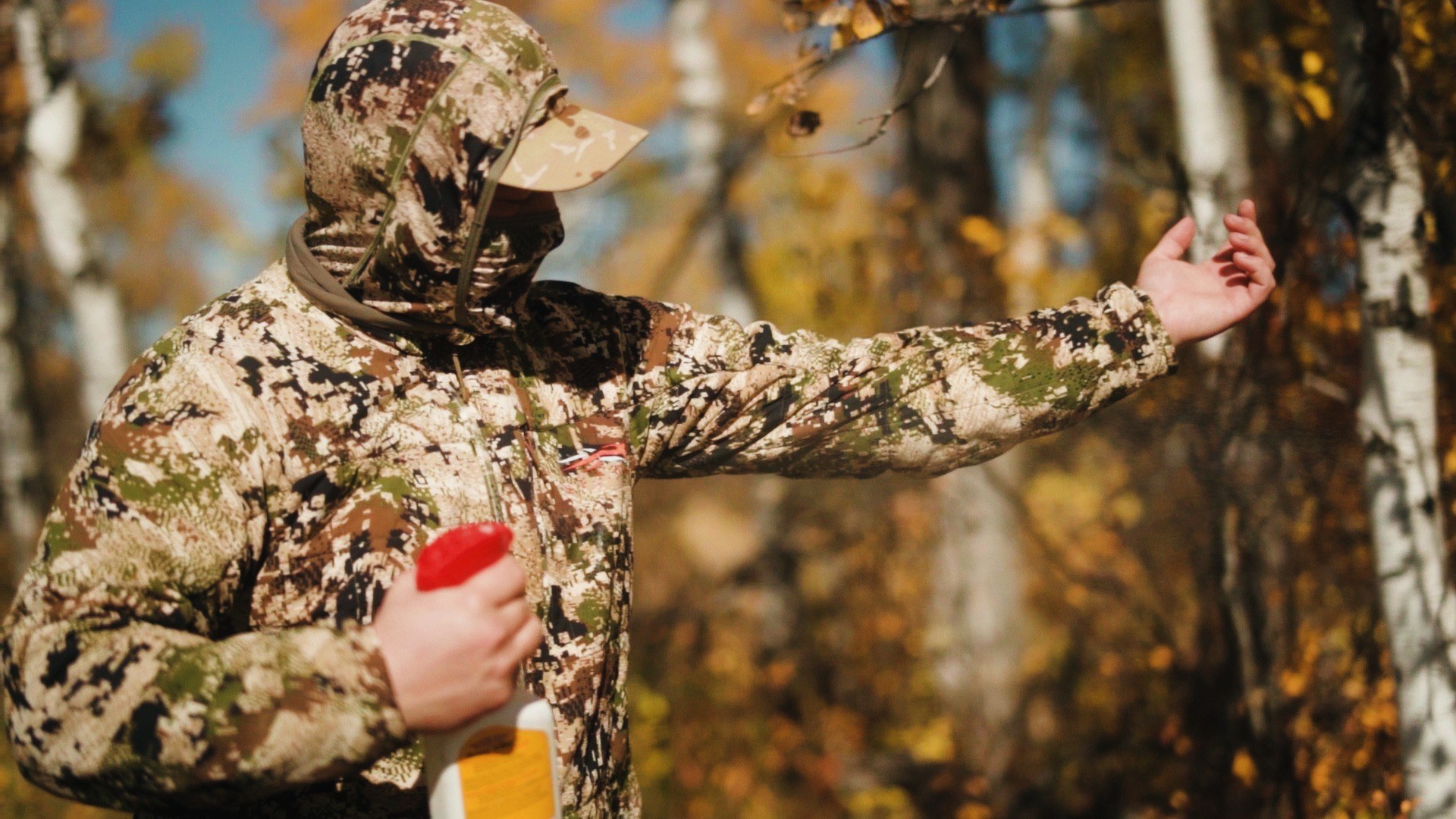
The Hunt Begins
As season finally arrived and success on the bean field felt increasingly bleaker, I set my focus on the alfalfa. The anticipation leading into the first sits was off the charts. Months of hard work, planning and gravel miles led me feeling some level of success already. The success in knowing I did my best to put myself in the right place to start the season. This season, I was lucky enough to have one of my friends and talented videographer - Marcel Laferriere, by my side to beautifully capture my whitetail season through his lens.
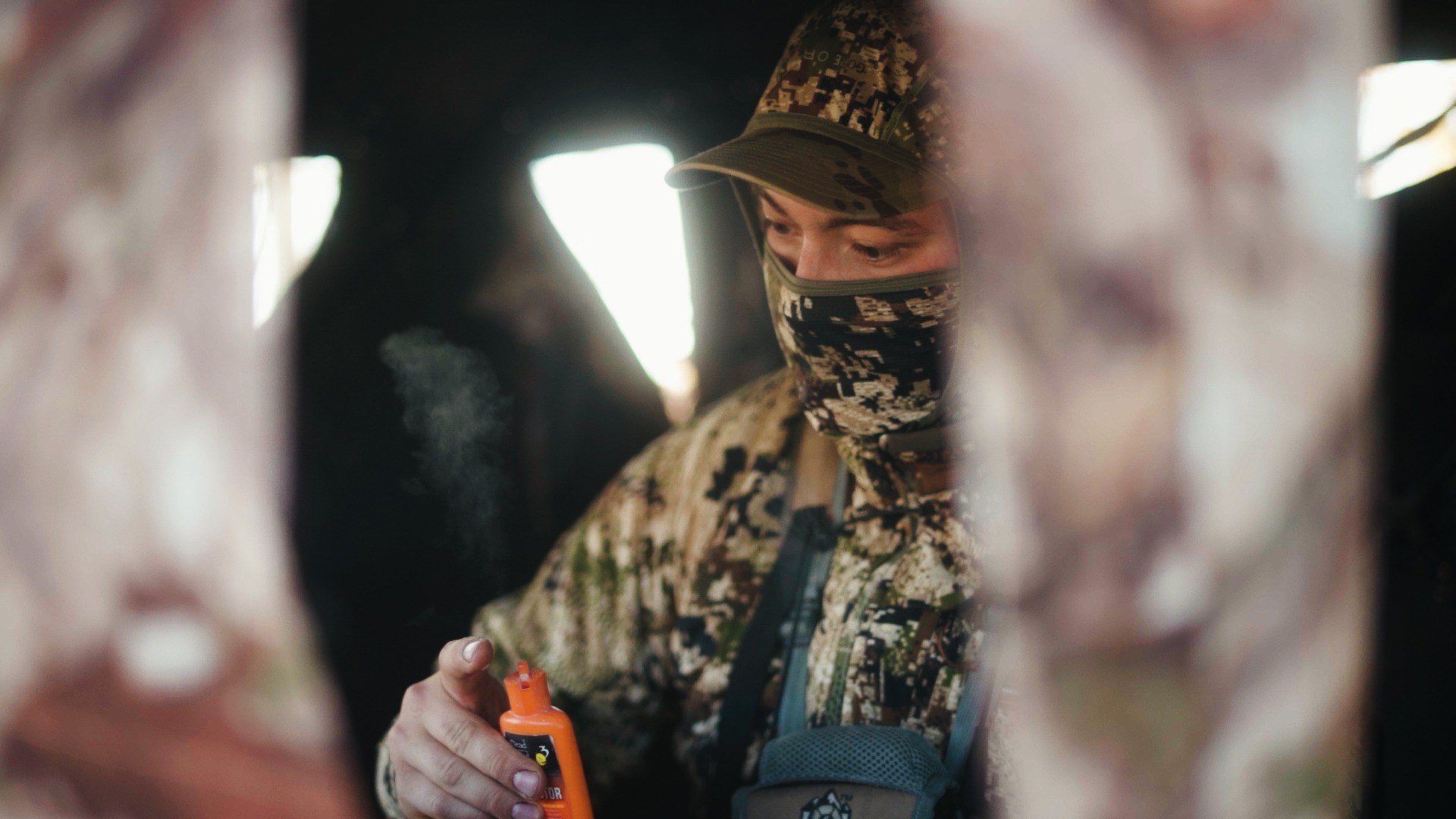
On one of our first sits in this spot, it seemed like a perfect evening. The wind was right and we already had a few younger deer filter past us. With over 30 minutes left before shooting light, I heard a crack directly behind us. My heart sunk, knowing this was the exact direction our wind was blowing, I slowly turned my head to see what it was. Sure enough, it was a beautiful, mature 5x5 buck in full velvet that I watched through the spotter on numerous occasions this summer. Moments later, as I expected he caught our wind, blew, and hightailed it out of there.
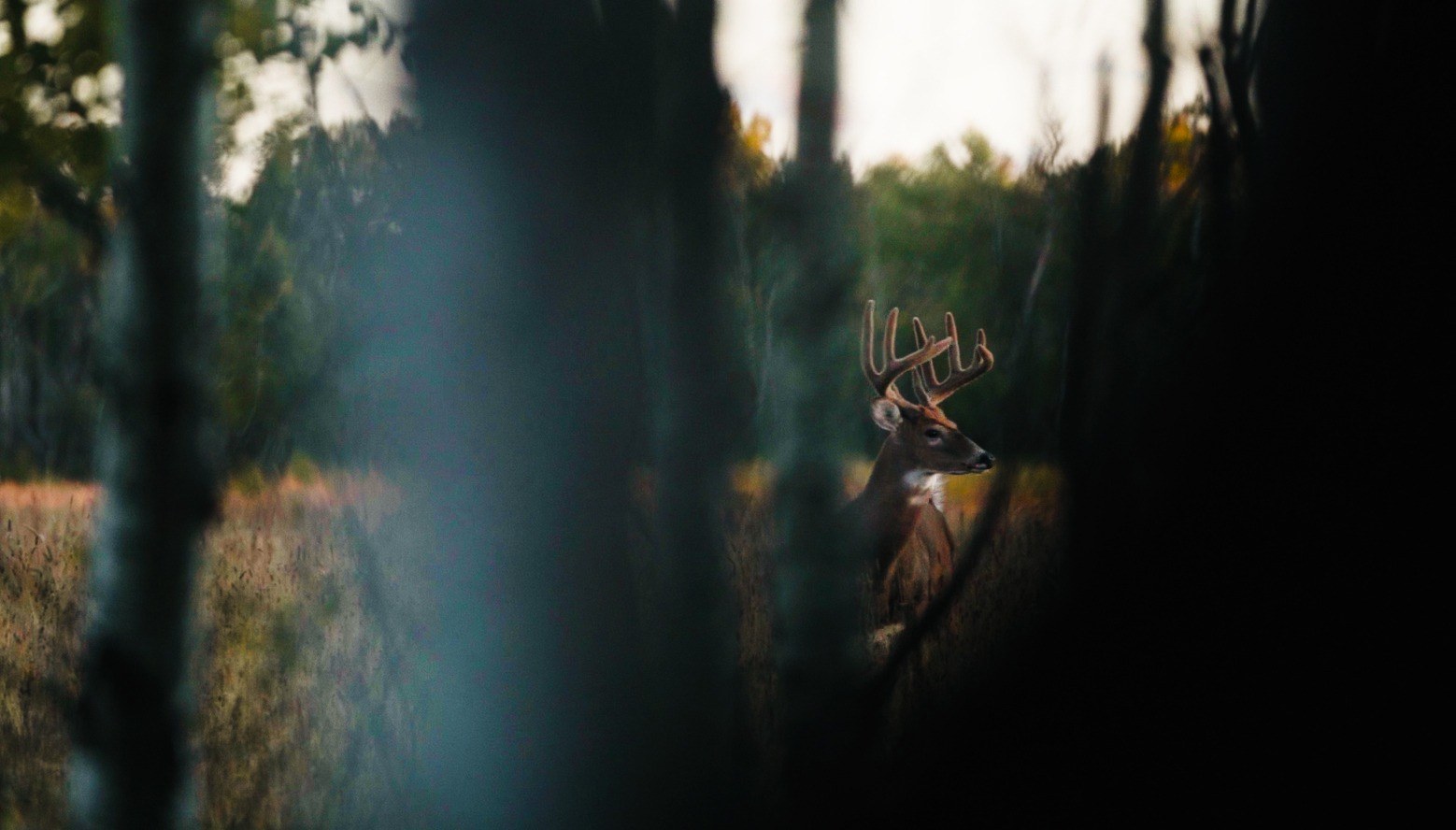
"Stickers"
As the season progressed, we were treated to a number of unbelievable encounters. Of these, another awesome 5x5 buck I coined “Stickers” due to a number of sticker points on his base. Although a great buck, I told myself I wasn’t going to take him this year. Stickers’ body is significantly smaller than the other mature bucks around. This indicated to me that he was still a young deer.

He held his velvet the longest out of all the bucks. Until the night of September 13th when he gave us one heck of a show. After a chorus of coyote howls, Stickers came running around the corner and strutted right past us. Blood red antlers and velvet hanging and swinging in every direction. It was truly a sight to behold.
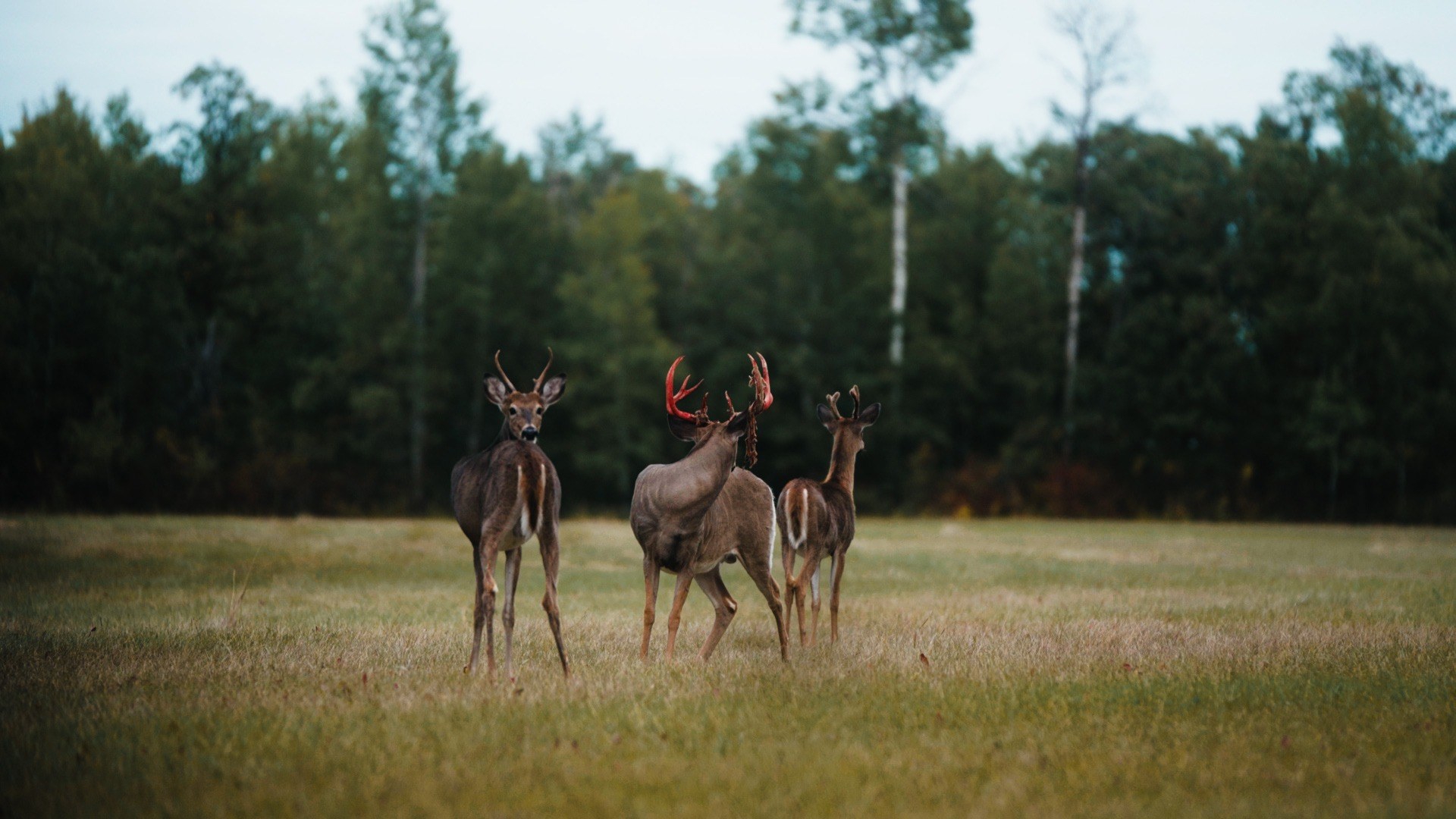
As the last of the velvet became a distant memory, shades of the impending rut started to shine through. Rubs and scrapes started popping up all over, and we were treated to a couple young bucks sparring in the field. 15 days after our first encounter with the mature 5x5 he made his second appearance. This time for just a brief visual and well out of range across the field. Despite no opportunity at a shot, it re-instilled our hope that we would still have a chance at him.

A Day Notched in my Memory, September 23rd
With high winds for a few consecutive days, September 23rd brought with it a much calmer evening. We kept to our same routines as we quietly made it into the blind. As the night wore on, we were surprised at the lack of deer movement. It wasn’t until 25 minutes before legal light ended, that a young buck breached the cover of the woods and began grazing in the field about 80 yards to the right of us. I watched him intently through the binos, looking for any clue to indicate another deer entering the area.
The Final Puzzle Piece
Suddenly, to our left, a deer appeared. With barely 10 minutes before legal light was over, I quickly realized this was the mature 5x5 that we had so much history with, and he was heading right to us. I double-checked the range of where he was about to walk, dialled in my sight and prepared to draw back. He was on a mission as he headed out into the field with enthusiasm. In no time, he was right in front of us. I drew back my bow just as he entered my shooting lane. He stopped perfectly broadside at 35 yards just as I took a breath, levelled my sight and settled my pin on his vitals. As I released the arrow, I watched the lighted nock disappear perfectly in the vitals.

I couldn’t believe it. I flashed back and thought about all the little puzzle pieces that had been coming together since June. Piece by piece I had been trying to build the full picture of these whitetails lives. At last the final piece had fallen into place. The level of excitement in that blind was through the roof. I caught my breath as Marcel quickly pulled up the clip on his camera to review if what we thought we just saw, was what happened. Sure enough, a perfect shot.
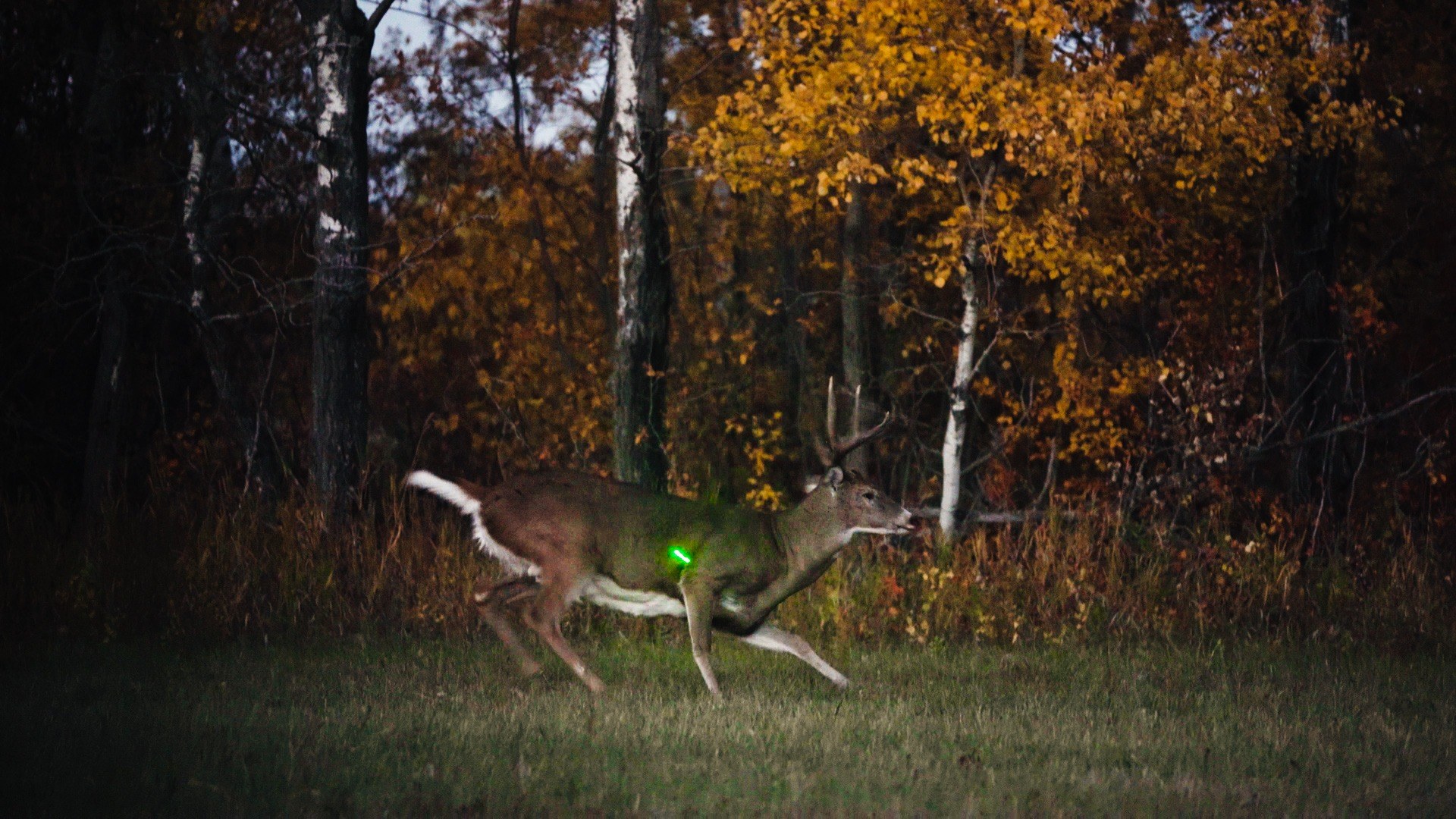
Follow the Arrow
After about 15 minutes in the blind we walked across to the shiny lighted nock that had been glowing at us since the shot. The blood on the arrow looked amazing. Even so, we headed back to the truck to get a few things together, call my dad to come join in on the festivities, and give the deer another 45 minutes.
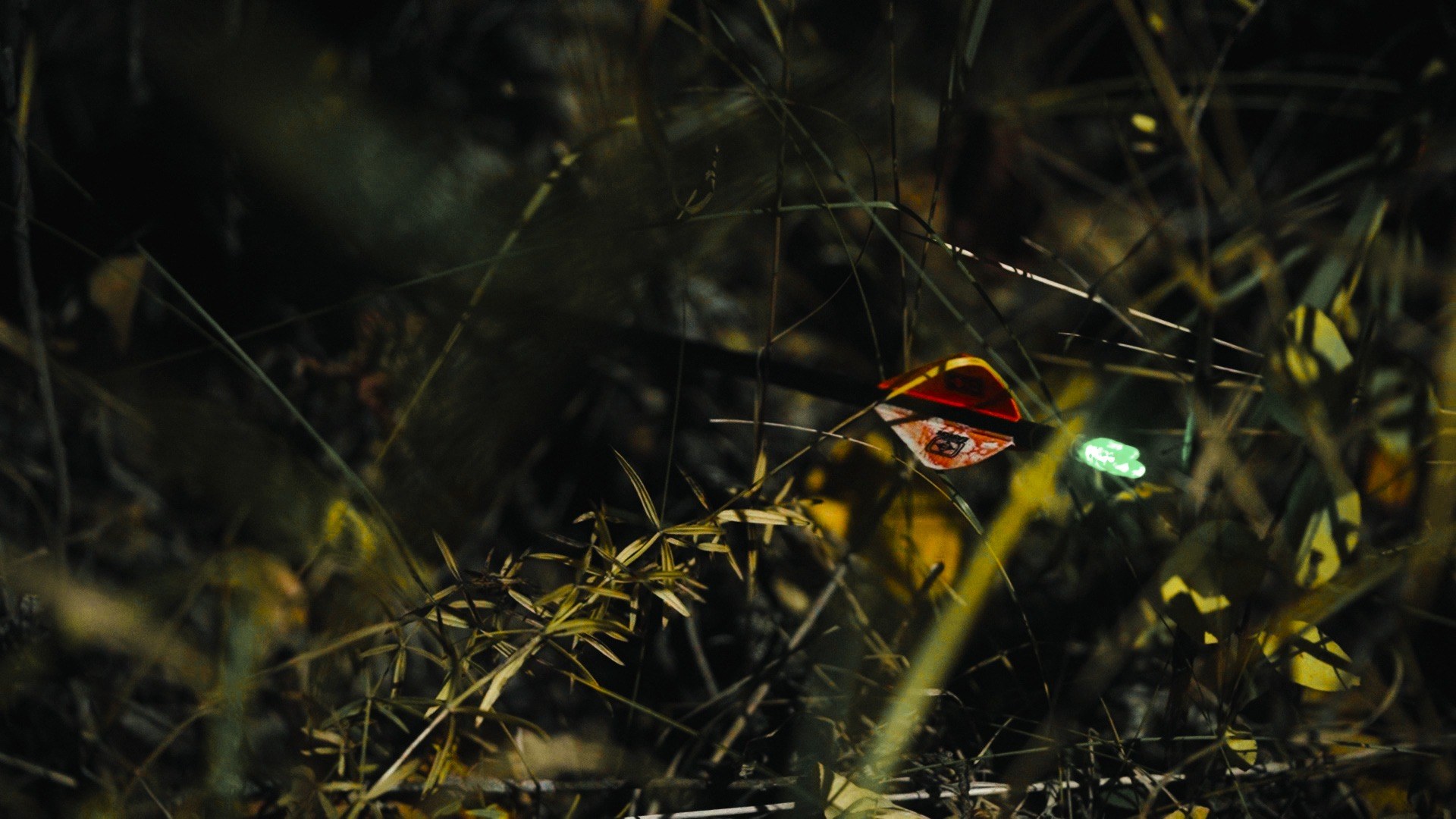
The clock moved slowly, but it was finally time to begin what proved to be a short tracking job. Now completely dark out and equipped with headlamps we started canvasing for blood in the bucks last known location. We quickly got on the trail, and only a few minutes later, while scanning with my headlamp across the tall grass, I illuminated a white belly laying just 30 yards from me. There he was.
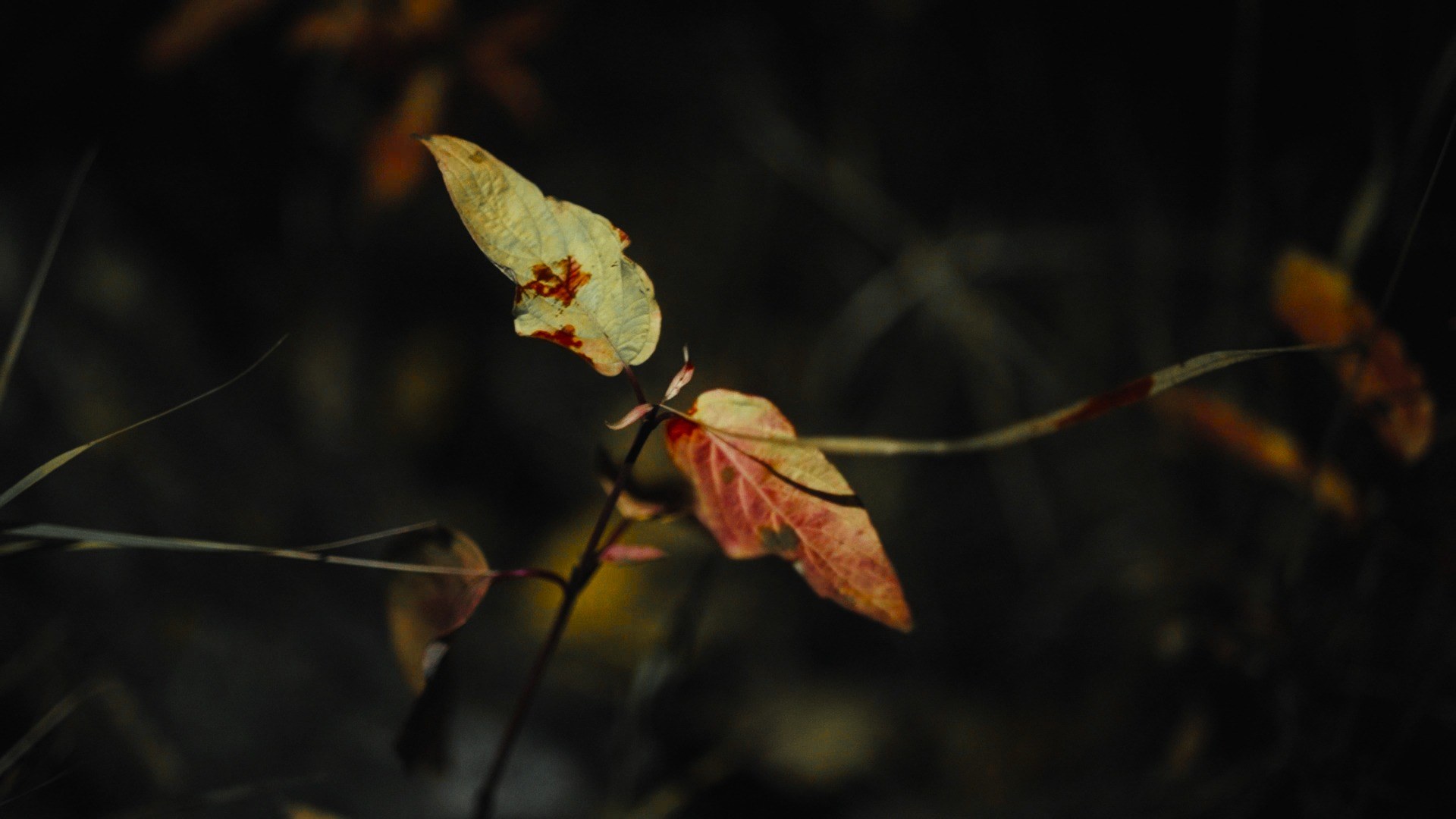
The Walk-Up To Remember
It took me a number of minutes to realize what we had just accomplished. I sat there for some time before I even put my hands on him. This deer goes down as my largest to date, and by far my largest with a bow. I was so fortunate to have Marcel there to capture these moments so well. After snapping a few photos to remember this experience and a photo to enter into the Master Hunter Program, it was time to get this deer loaded up, take it home, and begin one of my favourite parts of the harvest. Over the next day of meat processing I was nearly drooling as I packaged up these incredible cuts of meat. I could not wait to cook up some amazing recipes with this venison and show just how good deer meat is to my friends and family.
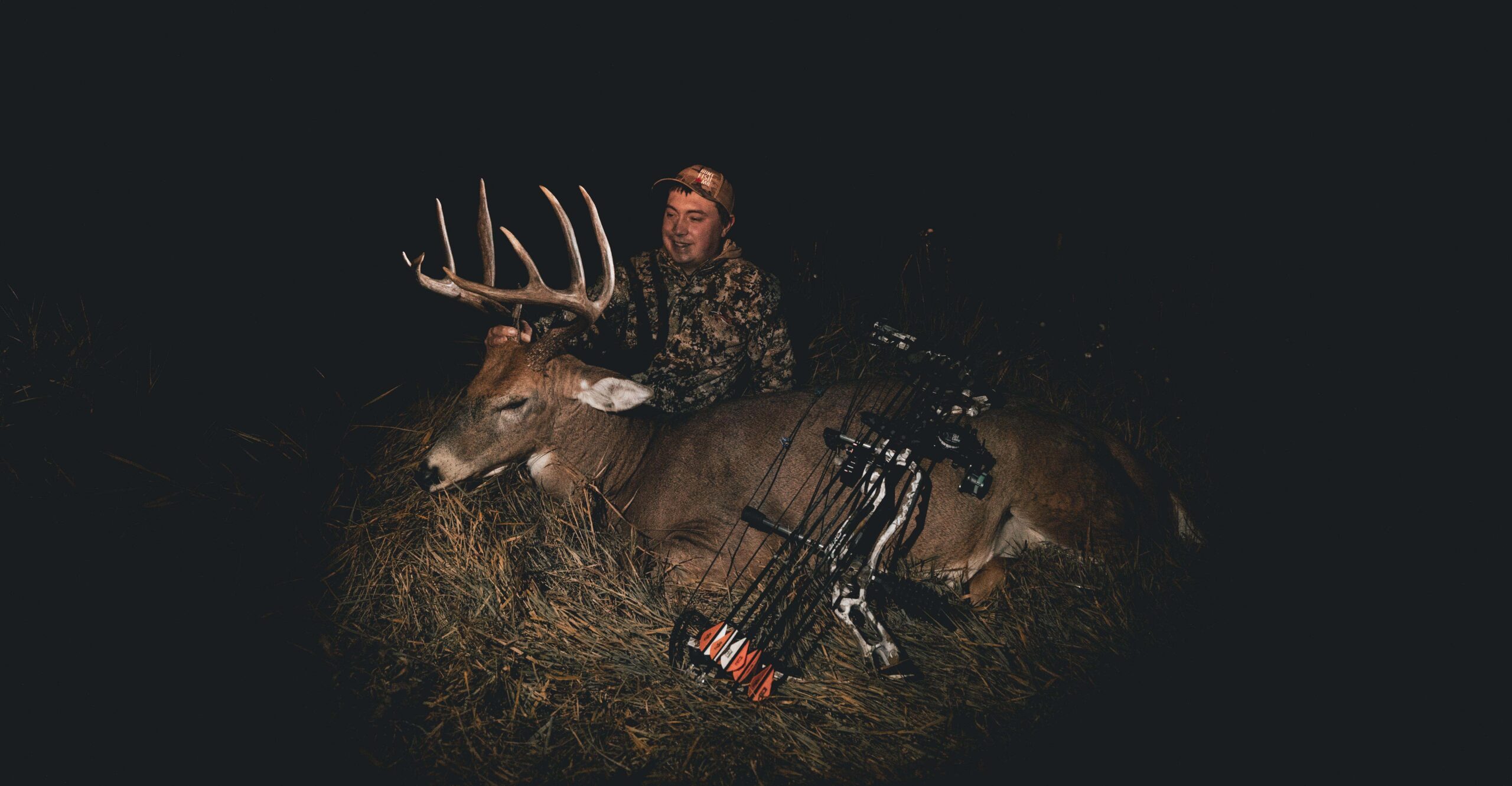
A Season to Remember
This season was definitely one for the books. For every one of the successes we experienced in the woods, there was a fair share of failures as well. I learned so much as a hunter throughout this process, which will only put me that much further ahead for next year. One of the greatest things as a hunter, is that there is no mastering of the craft. Just consistent and never-ending learning and improving upon yourself to be the best hunter you can.
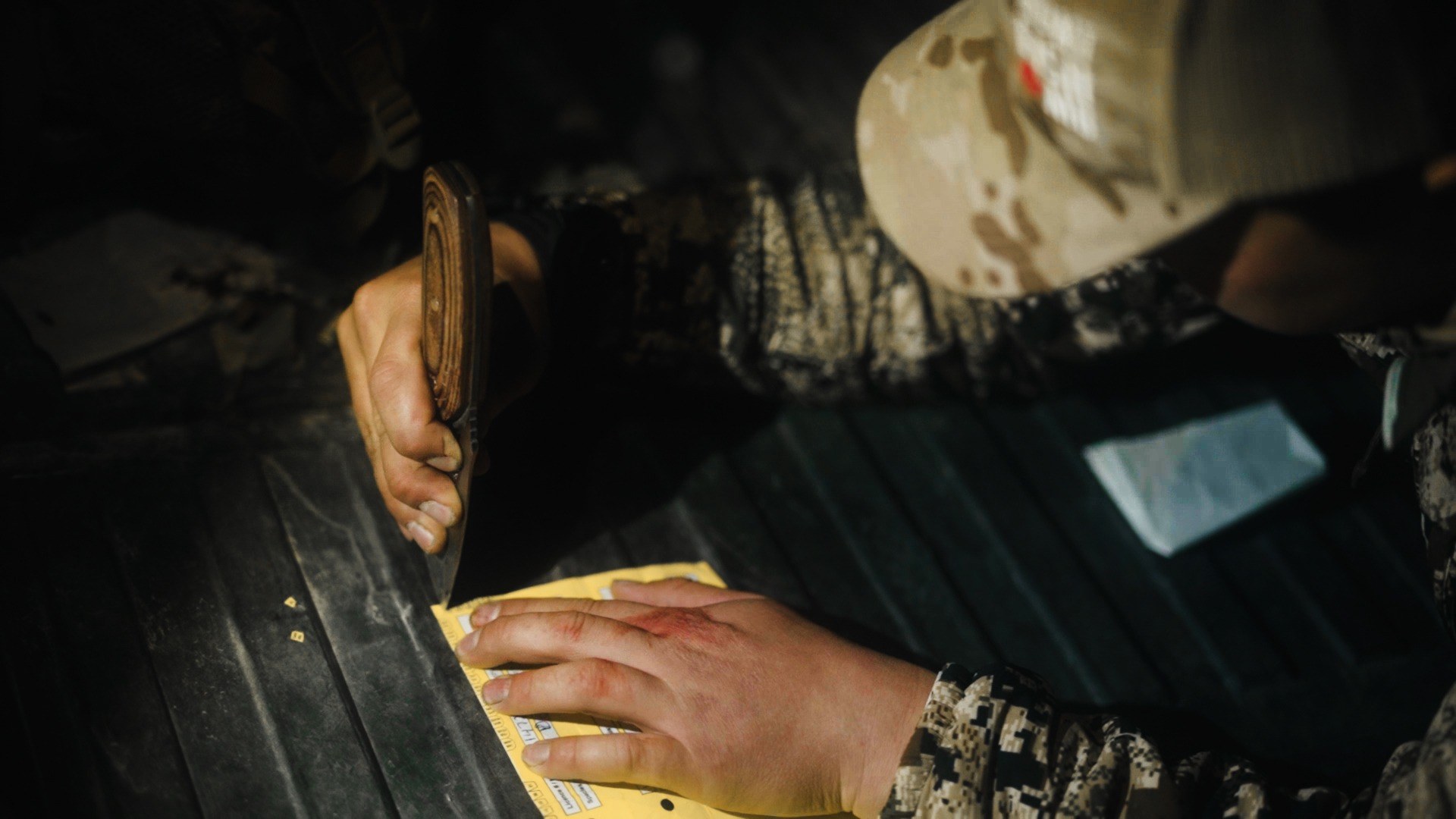
HuntFishMB Trip Tips: Top 5 Archery Whitetail Deer Hunting Tips
Throughout this season there was a number of key whitetail deer hunting tips that helped make my season a success. In this HuntFishMB Trip Tips video below, I pick out my top 5 archery whitetail deer hunting tips from this season. Then go through each one of them briefly with some video from the season to back it up!